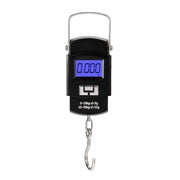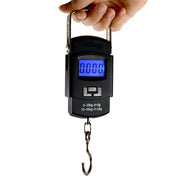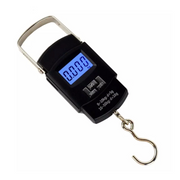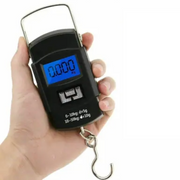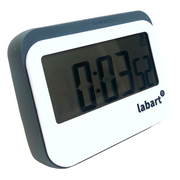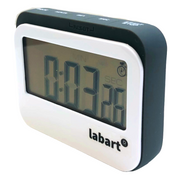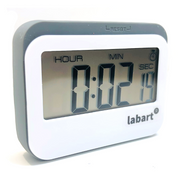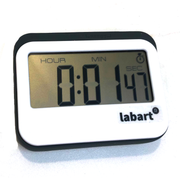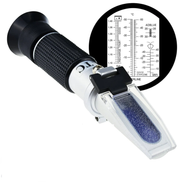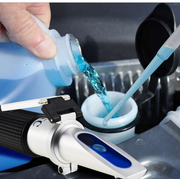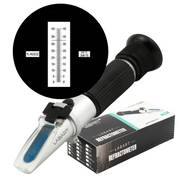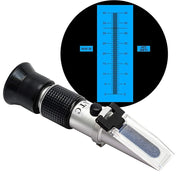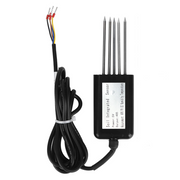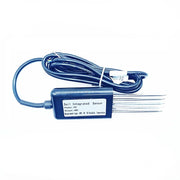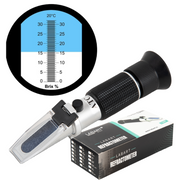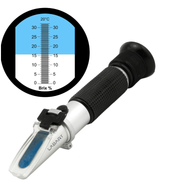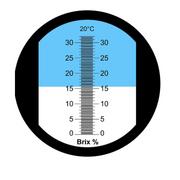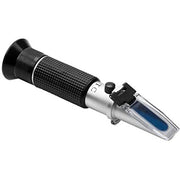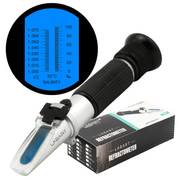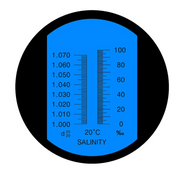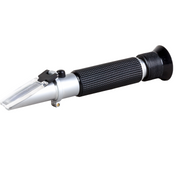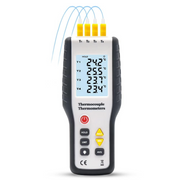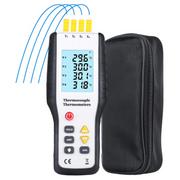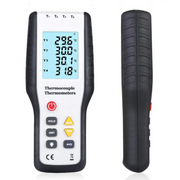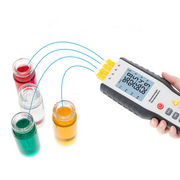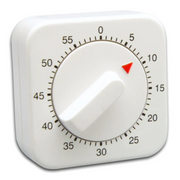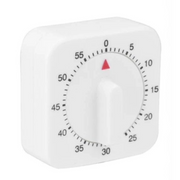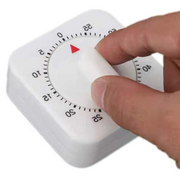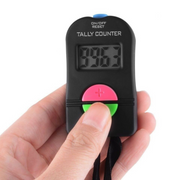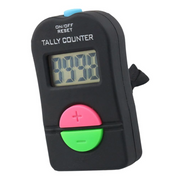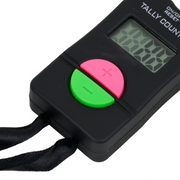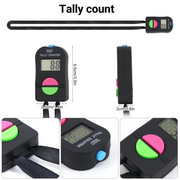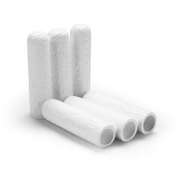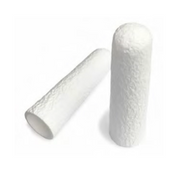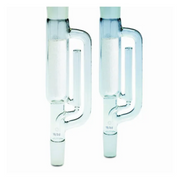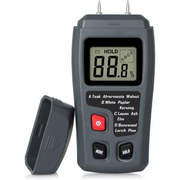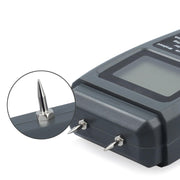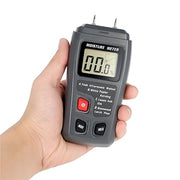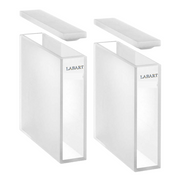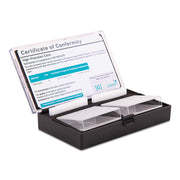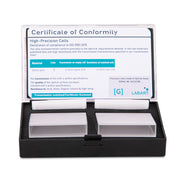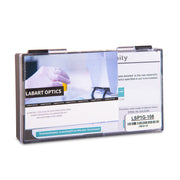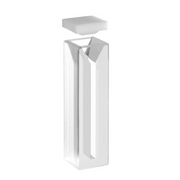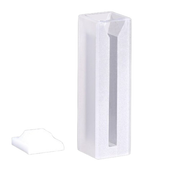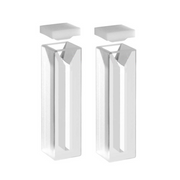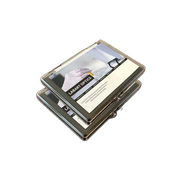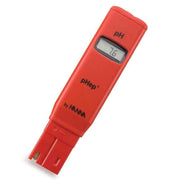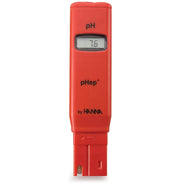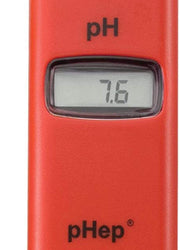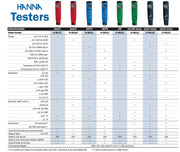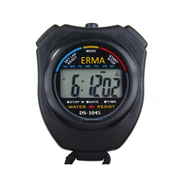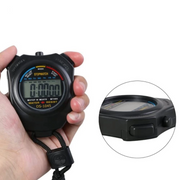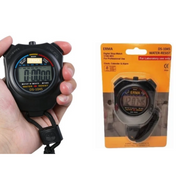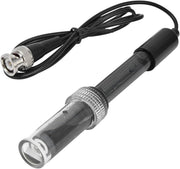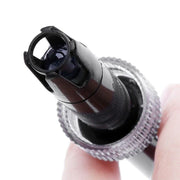A Brix refractometer is an optical device that measures the concentration of dissolved sugar in a liquid. The principle behind its operation is the refraction of light. When light passes through a liquid, it bends or refracts. The degree to which the light bends is proportional to the concentration of dissolved solids, primarily sugar, in the liquid. Here's a detailed fact about its functioning:
Fact: The Role of Light Refraction in Brix Measurement
The core principle of a Brix refractometer relies on the phenomenon of light refraction. When light enters a liquid sample placed on the refractometer's prism, it changes speed and direction depending on the sample's density. This change in direction is measured by the refractometer to determine the Brix value.
How It Works?
- Light Source: A light source, either natural (like daylight) or artificial, is directed through the liquid sample.
- Prism: The prism in the refractometer bends the light as it passes through the sample.
- Critical Angle and Shadow Line: The point at which the light changes direction most sharply is known as the critical angle. This angle forms a distinct boundary line between light and dark areas, often referred to as the shadow line.
- Scale: The shadow line is viewed against a scale through the eyepiece of an analog refractometer or displayed digitally in a digital refractometer. The position of this line on the scale indicates the Brix value, representing the percentage of sugar in the solution.
Understanding Brix Scale
The Brix scale measures the percentage of sugar by weight in a solution. In winemaking, a winemaker might use a Brix refractometer to measure the sugar content of grape juice. A Brix reading of 24% Brix indicates that the grape juice contains 24 grams of sugar per 100 grams of juice. This information helps the winemaker estimate the potential alcohol content after fermentation.
Why Measure Sucrose as Brix Percentage?
Measuring sucrose as Brix percentage is a common practice in various industries, particularly in food and beverage, agriculture, and winemaking, due to several reasons:
1. Standardization and Consistency
Brix is a standardized unit of measurement that represents the concentration of sucrose in an aqueous solution. One degree Brix (°Bx) is equivalent to 1 gram of sucrose in 100 grams of solution. This provides a consistent and easy-to-understand scale for comparing sweetness levels across different products.
2. Simplicity and Efficiency
Using Brix to measure sucrose concentration is simple and efficient. Brix refractometers, the instruments used to measure Brix, are easy to use and provide rapid results. This allows for quick decision-making in processes where sucrose content is critical.
3. Quality Control
In the food and beverage industry, maintaining the correct sucrose concentration is vital for ensuring product quality. Measuring Brix helps producers maintain the desired sweetness and overall flavor profile, ensuring consistency in products like fruit juices, sodas, and wines.
4. Economic Importance
For industries like agriculture, especially in sugarcane and beet production, the Brix measurement is directly linked to the economic value of the crop. Higher Brix values indicate higher sucrose content, which translates to higher yield and better market prices.
5. Fermentation Monitoring
In winemaking and brewing, Brix measurements are crucial for monitoring the fermentation process. By measuring the initial Brix of grape must or wort, producers can estimate the potential alcohol content. Monitoring changes in Brix over time helps track the progress of fermentation.
6. Product Development
For food scientists and product developers, knowing the Brix percentage is essential when formulating new products. It helps in balancing sweetness with other flavors and ensuring the product meets consumer preferences.
7. Nutritional Information
For consumers, Brix measurements can provide useful information about the sugar content in beverages and foods, aiding in making informed dietary choices.
Choosing the Right Refractometer
- Handheld Analog Refractometers: Simple, durable, and do not require batteries.
- Digital Refractometers: Provide more precise readings and often have additional features like temperature compensation.
Calibration
Before using your refractometer, it needs to be calibrated to ensure accuracy.
- Clean the Prism: Use distilled water and a soft cloth to clean the prism.
- Apply Distilled Water: Place a few drops of distilled water on the prism.
- Close the Lid: If your refractometer has a cover, close it to spread the water evenly over the prism.
- Zero the Refractometer: Look through the eyepiece and adjust the calibration screw until the boundary between light and dark (the shadow line) aligns with the zero mark on the scale.
- Dry the Prism: Wipe off the distilled water with a soft, lint-free cloth.
Measuring Sample
- Clean the Prism Again: Ensure no residue from previous tests is left on the prism.
- Apply the Sample: Place a few drops of the liquid sample on the prism. Make sure the sample covers the entire surface of the prism.
- Close the Lid: This will help spread the liquid evenly.
- Look Through the Eyepiece: Hold the refractometer up to a light source and look through the eyepiece.
- Read the Measurement: Observe where the boundary between light and dark falls on the Brix scale. This is your Brix reading.
Temperature Compensation
Temperature can affect the accuracy of the reading. Many refractometers have Automatic Temperature Compensation (ATC). If yours does not, you’ll need to manually adjust the reading based on the sample's temperature using a correction chart.
Applications of Brix Refractometer
1.Agriculture- Fruit and Vegetable Quality: Determines ripeness and quality based on sugar content.
- Harvest Timing: Optimizes harvest time for best flavor and market value.
- Plant Health: Indicates nutrient uptake and disease resistance.
- Grape Must Analysis: Measures sugar content to estimate potential alcohol.
- Fermentation Monitoring: Tracks sugar consumption during fermentation.
- Quality Control: Ensures desired sweetness and alcohol balance.
- Juices and Soft Drinks: Standardizes sweetness for consistent taste.
- Brewing: Estimates potential alcohol content and monitors fermentation.
- Jams and Jellies: Maintains correct sugar concentration for taste and preservation.
- Confectionery: Ensures desired texture and flavor in sweets.
- Dairy Products: Balances sweetness and texture in products like yogurt and ice cream.
- Culture Media Preparation: Ensures precise sugar concentrations for microbial growth.
- Quality Control: Verifies correct solution concentrations in formulations.
- Quality Assessment: Measures sugar content to ensure honey quality and shelf life.
- Coolants and Lubricants: Ensures correct mixture in metalworking to prevent equipment damage.
- Chemical Manufacturing: Maintains correct solution concentrations in processes.
- Scientific Research: Used in studies on plant physiology, food science, and biochemistry.
- Educational Tools: Teaches principles of solution concentration and refractive index.
How to Choose Your First Brix Refractometer?
When selecting your first Brix refractometer, consider factors like material, features, accuracy, and ease of use. Labart offers high-quality refractometers made from copper alloy and equipped with Automatic Temperature Compensation (ATC). Here’s a concise guide to help you choose the best option:
Key Features of Labart Brix Refractometers
- Material: Copper Alloy
- Durability: Copper alloy construction ensures the refractometer is resistant to corrosion and damage, offering long-lasting use.
- Precision: Provides stable and accurate measurements, superior to those made with plastic or low-grade metals.
Automatic Temperature Compensation (ATC)
- Accuracy: ATC automatically adjusts for temperature variations, providing consistent readings regardless of environmental changes.
- Convenience: Eliminates the need for manual temperature corrections, making the device easier to use and reducing the potential for user error.
Measurement Range and Resolution
- Scales Of Brix Refractometer: Typically offers a measurement range of 0-10%, 0-32%, 0-40%, 0-50%, 0-80%, 0-90%Brix suitable for a variety of applications.
- High Resolution: Precision with a resolution of 0.1° Brix, ensuring detailed and accurate readings.
Design and Build Quality
- Ergonomics: Designed for comfortable handling with a well-balanced body.
- Optics: High-quality optical components provide a clear and sharp view of the measurement scale, making it easy to read.
Conclusion
A Brix refractometer is a vital tool for anyone needing to measure sugar content in liquids accurately. Regular calibration and proper usage will ensure reliable readings, helping maintain the quality and consistency of your products.
Click here to buy LABART brix refractometers


























